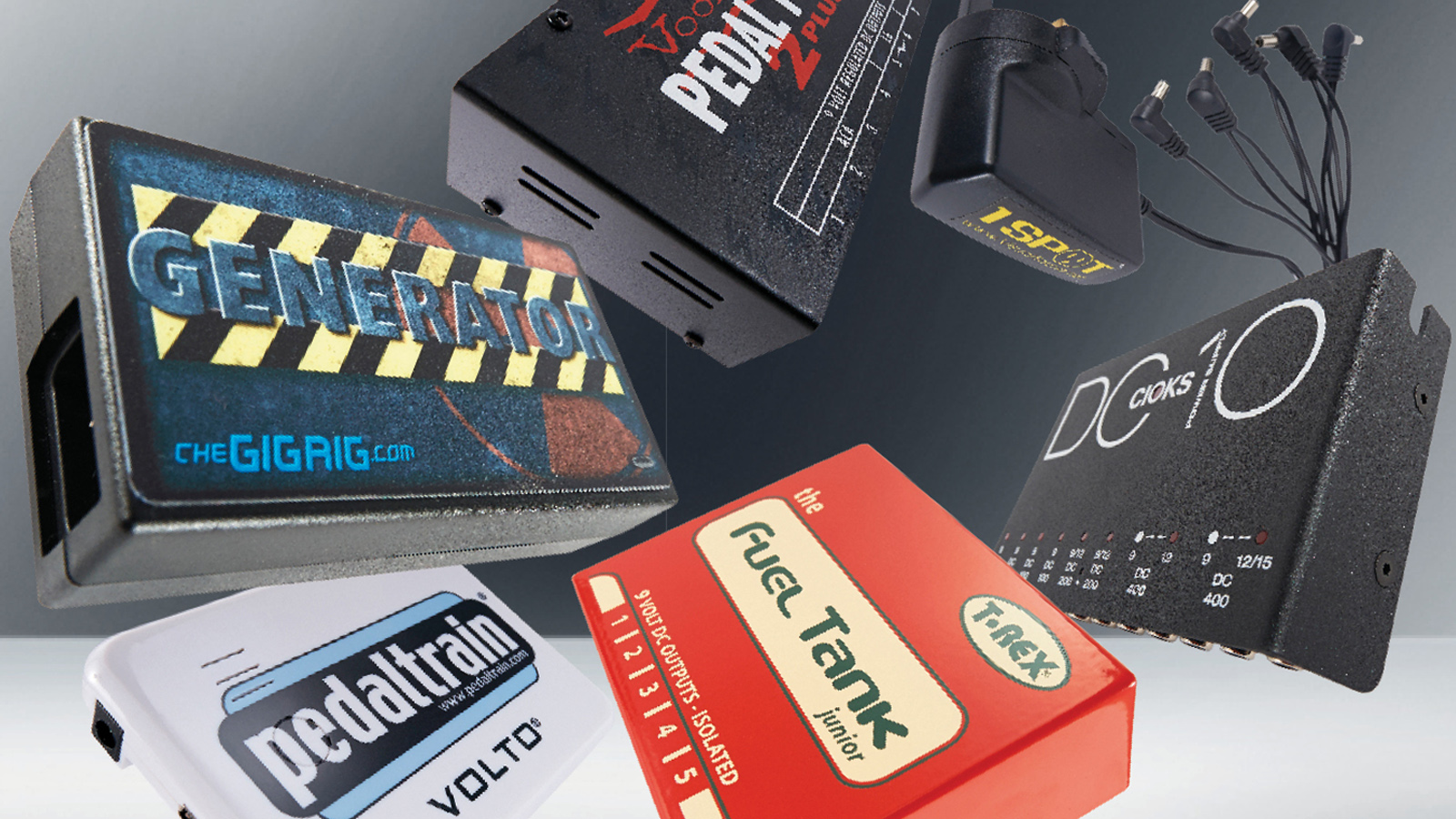Guitar effect pedal power supplies: what you need to know
Power all your pedals from one supply

Putting together a guitar pedalboard? Let us talk you through how to power all of your pedals from one supply, and point out some useful buying options
Why do I need one of these?
Because A: You don't want to rely on batteries; B: You have an array of pedals with differing power requirements; C: You want a tidy stage; or D: All three of the above.

While it's probably fair to say that the vast majority of pedals run off 9V DC - that's the power supplied by a PP3 battery - some pedals require more voltage - 12V, 18V or even 24V.
What's more, some pedals have a high current draw, that can't be supplied by a battery, so will rely on a power adaptor, usually supplied by the manufacturer.
If you bring a few of these 'wall warts' into the equation, and perhaps a four-way to plug them into your pedalboard, the floor around your feet can soon start to get a bit messy.
What about AC?
Some pedals do run from AC power, usually 9V or 12V, so if you have one you may need a separate wall wart on your board, or you could look at some of the power supplies that provide AC outlets.
Some are AC-only, such as the Voodoo Lab Pedal Power AC, and some have a mix of AC and DC, such as the Cioks AC10, AC8 and Ciokolate and T-Rex Fuel Tanks (not the Junior).
Want all the hottest music and gear news, reviews, deals, features and more, direct to your inbox? Sign up here.
What is an isolated supply, and why is it important?
Basically, it minimises unwanted noise. An isolated power supply uses a transformer to keep each of its outlets completely electrically isolated, offering a separate clean power path to each pedal rather than a daisy-chain set-up, where the power flows from one pedal to the next.
An isolated supply should eliminate ground loops and any associated hum, as there is no grounding path between the pedals.
Do all pedals have the same type of power input?
The majority of pedals follow the connection protocol brought in with the first Boss compact pedals -a 2.1mm barrel connector that is centre-negative (often indicated on the pedal by a -9V DC or similar symbol).
A small number of pedals, Moogerfoogers for example, needa centre positive connection on the barrel, while others may need a mini-jack plug.
Fortunately, most companies who provide pedal power supply units have a range of optional cabling to support most pedals, including reverse polarity cables, various types of plug and alsoa battery connector for pedals that don't have the facility to connect toa power adaptor.
Okay, so I may need different voltages, but what's the deal with current?
Most pedals that can also run off battery power have a current draw of less than 100mA, but in recent years manufacturers have been coming up with sophisticated digital pedals that need more than this.
Among others, Boss Twin, Eventide 'Factors and some Strymon pedals have higher current draw requirements. The pedal power supplies on test here will be able to supply a total amount of current that can be shared between their outlets, but will have a limit for what each outlet can supply.
So, for example, if you want to run an Eventide TimeFactor you'll need an outlet that can supply 400mA.
Trevor Curwen has played guitar for several decades – he's also mimed it on the UK's Top of the Pops. Much of his working life, though, has been spent behind the mixing desk, during which time he has built up a solid collection of the guitars, amps and pedals needed to cover just about any studio session. He writes pedal reviews for Guitarist and has contributed to Total Guitar, MusicRadar and Future Music among others.


